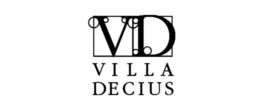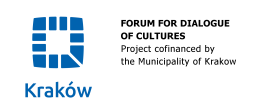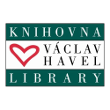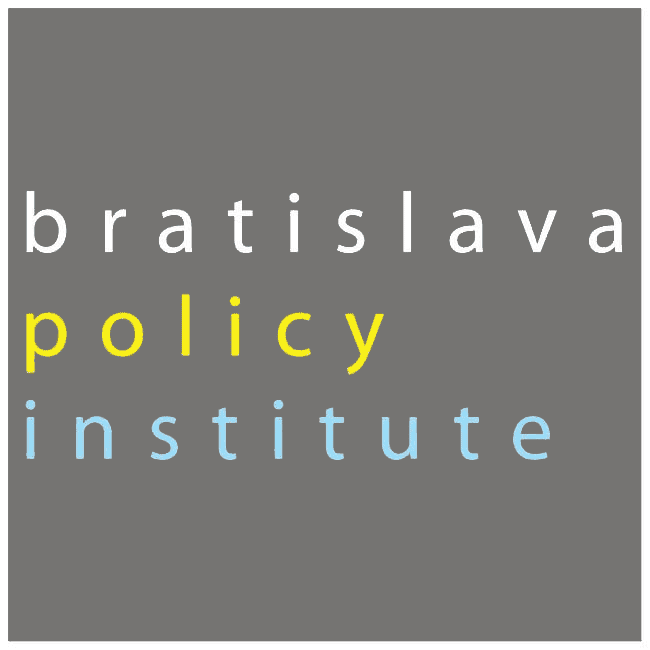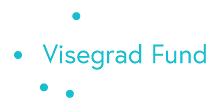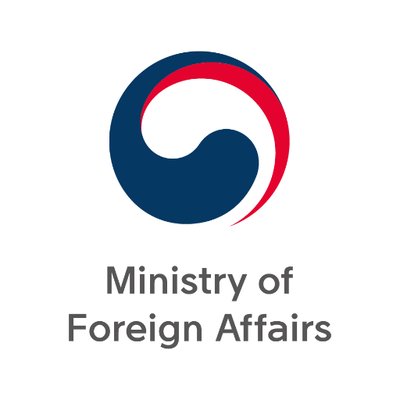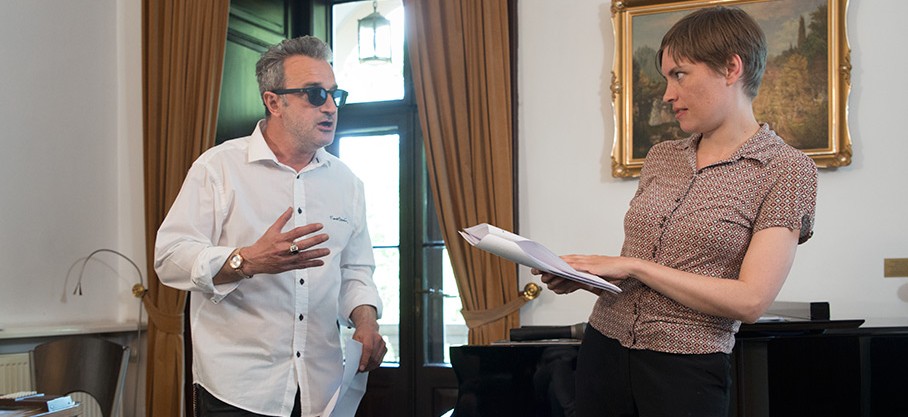
This year marks the 25. Anniversary of the Polish-German Treaty of Good Neighbourship and Friendly Cooperation. Referring to this special occasion, the programme of the fourth day of the Visegrad Summerschool thematised historical retrospect and trilateral cultural dialogue.
Treaties and societies
Jan Rydel – professor of history at the Pedagocgical University of Krakow, from 2001 till 2005 head of the Department of Culture and Information in the Polish Embassy in Berlin – gave a lecture on the history of the Polish-German relations in the 20th and 21st century and their contemporary state. It was a hike through a very chequered history full of dark sides which in the final 25 years got brighter and brighter. Jan Rydel emphasized what contributed to the normalization of the Polish-German relations – especially the very important message “We forgive and we also beg for forgiveness“ by the Polish bishops in 1965, the German-Polish Border Treaty of 1990 and of course the extensive Treaty of good Neighbourhood and friendly cooperation which was signed in 1991 and which also brought about the valuable Deutsch-polnische Jugendwerk/Polsko-Niemiecka Współpracy Młodzieży. “The economic ties between Poland and Germany are currently very intense, more than the German-Russian links“, as Rydel also remarked. Furthermore, he referred to the new intensive social links between Poles and Germans after 2005, the plenty mixed marriages and the hundreds of partnerships of cities. According to him, the status quo pf the Polish-German relationship could be called 'maturity'. “We know on what we can count. The relations are pretty stabil.“
“Pleasantfelde“ – photo exhibition
The exhibition “Pleasantfelde“ was opened in the Villa Decius side by side by director Danuta Glondys and Tomasz Padło – geographer by profession, photographer by passion, lecturer at the Pedacogical University of Krakow. Giving his audience backround information about his presented works, Tomasz Padło admitted that he was full of stereotypes about Germany when he arrived in Brandenburg to stay in an artistic residency in the Genshagen Castle in 2013. But his stay changed his attitude. A folder promoting the city Ludwigsfelde (which Genshagen is a part of) catched his interest – and he was inspired to explore the environment of Ludwigsfelde and to take some photographs which respond to certain phrases in the folder. So, his photographs reflect his own perception of space in striking contrast to folder presentations which, as he noted, “transmit uniformized information about space“.
It was very appreciable that Tomasz Padło even made his photo exhibition an interactive experince: He shared out phrases extracted from a folder promoting Ludwigsfelde to the participants and let them find out which photograph responds to which phrase. Addressed themes were for example history, nature, education and employment. Altogether, it became quite explicit to the participants that Tomasz Padło's photographs speak a strong language – and that they make up a convincing example of the connection between geography (respectively “space“) and photography.
Threesome – Weimare Triangle 25
“Even I sometimes don't know what to do with this Triangle“, Christel Hartmann-Fritsch admitted. She is managerial board director of the Foundation Genshagen, a non-profit foundation providing a platform for European cross-border dialogue in the realms of culture, art, politics, economy, science and media. In political discussions led within the context of the Weimar Triangle (foreign-policy consultation forum between France, Germany and Poland since 1991), there is “nothing to hear about art and culture“, as Christel Hartmann-Fritsch regretfully mentioned. Politicans mostly do not adequately consider cultural backrounds – “but my input is art-based!“, she remarked concerning her personal contribution. She presented the participants insights about the residency programmes of the Foundation Genshagen, especially about the eight-week trilateral residency programme “George Sand – Frédéric Chopin“ which brings together artists from Poland, France and Germany for mutual inspiration and creative cooperation. Three artists with different cultural backrounds on an equal basis – so, too, are the three nations of the Weimar Triangle on an equal basis since Poland's accession to the EU in 2004.
To “establish and promote networks between social groups in Europe“ and to consolidate “Europe in its cultural diversity“ named Christel Hartmann-Fritsch as 'key things' of the foundation. She stressed the objective to ensure a common fundamental understanding for European values – viewing a cultural-artistic approach as appropriate in this regard. Intellectual and artistic efforts as well as political ones are of great importance in border crossing networks according to Christel Hartmann-Fritsch. Culture and art “open up ways to think across borders“, and even more: They “can inspire responsible political acting“ – since “every single political negotiation is also a cultural one“.
Another point Christel Hartmann-Fritsch referred to were the floods of migrants arriving in Germany. “Germany will never be as it was two or three years ago. We slowly realize that we are in the middle of the change. And we have to act, we have to adjust.“ She pointed to the responsibility of universities to change in terms of integration and also to her conviction that art can play a promotive role in integration processes.
Christel Hartmann-Fritsch finalized her presentation with the following appeal to the audience: “Think by yourself. Get to know visual arts. Listen to music. Explore the artistic side of life. Do not underestimate the power of arts.“ In this way, according to her, life will be richer and Europe will have a bigger chance to develop in a harmonic direction.
Trilateral spectacle
In the evening, the music hall of the Villa Decius became the stage for the trilateral spectacle “On the influence of freedom“ performed by Olivier Maltinti (French actor, director, author and musician), Friederike Kenneweg (German composer, musician and jounalist) and Tomasz Padło (Polish geographer and photographer combining his two fields of interest). The three artists created and firstly performed this spectacle during their mutual artistic residency in Genshagen in 2013. Their audience in the Villa Decius was fascinated by their performance combining elements of acting, music and photo art – and especially by the way they operated with the three languages (Polish, French and German) giving them a mutual sphere to unfold esthetically and showing the crossroad between language, sound and music. The spectacle was an artistic confrontation of three different cultural backrounds in search for similarities and in search for a common perception of space. It presented a marvellous example for harmonious and fruitful cross-border cooperation in the realm of art.
by Jill-Francis Käthlitz

